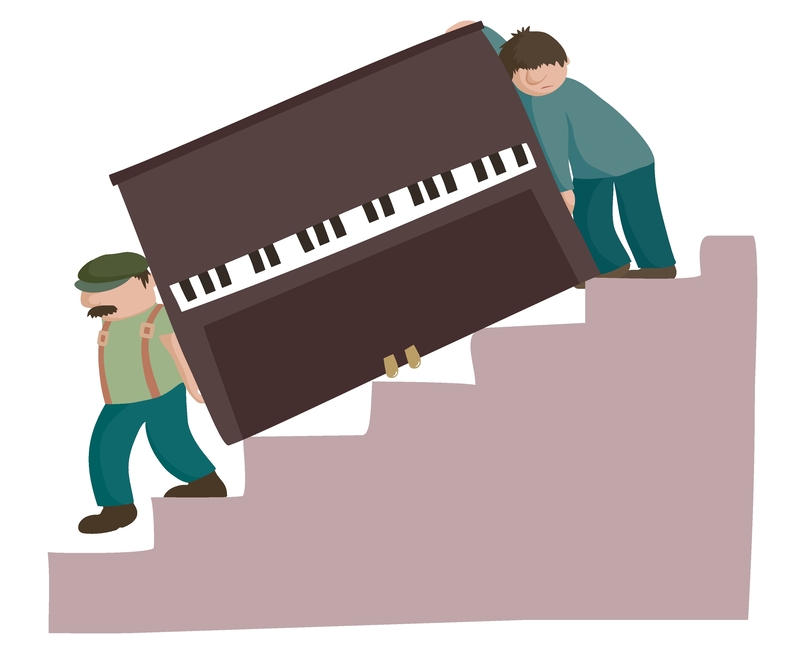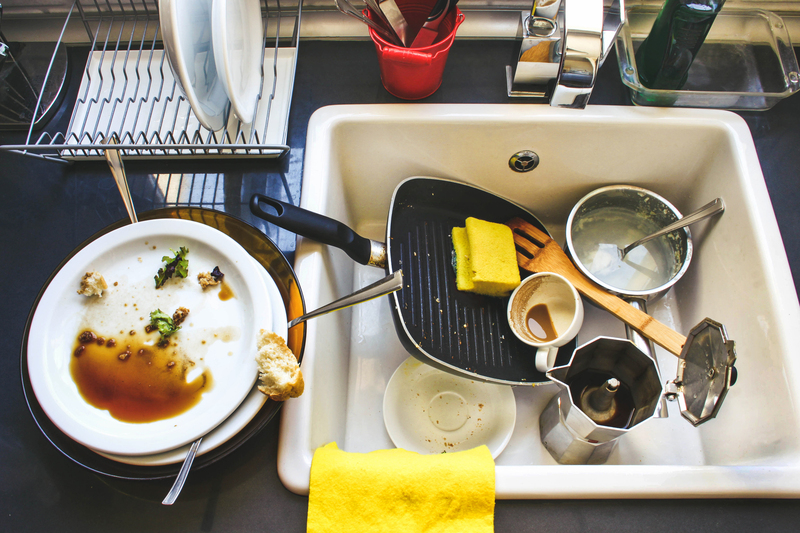How Not to Relocate Your Piano: The Case for Professionals
Posted on 15/06/2025
How Not to Relocate Your Piano: The Case for Professionals
Relocating a piano is no ordinary moving task. These majestic instruments are not only heavy and awkwardly shaped but are also highly sensitive to movement and environmental changes. While the thought of saving money by moving your piano solo or with a few friends may seem appealing, the risks significantly outweigh any short-term savings. In this comprehensive guide, we'll explore the dangers of DIY piano relocation, offer cautionary tales, and underscore the vital reasons to hire professional piano movers for your next move.
Understanding the Risks: Why Pianos Are Different
Unlike standard furniture, pianos embody a structural complexity that makes moving them a logistical and technical challenge. They are comprised of thousands of moving parts and hundreds of delicate strings, all working together to produce the rich sounds we treasure. Here's what sets a piano apart:
- Weight Distribution: Pianos can weigh anywhere from 300 to 1,400 pounds, with much of the weight concentrated in the cast iron plate and strings.
- Size and Shape: Pianos, especially grands, are unwieldy due to their length and design, often requiring tight cornering and complex maneuvering.
- Sensitivity: Both upright and grand pianos are extremely sensitive to jostling, tilting, and temperature variations.
Attempting a piano move without professional help can lead to irreversible aesthetic and mechanical damage--or even physical injury.
Common Mistakes When Moving a Piano Yourself
If you're considering a DIY piano relocation, these are some of the pitfalls to avoid:
- Improper Lifting Techniques: Underestimating the piano's weight can lead to back injuries and dropped instruments.
- Lack of Specialized Equipment: Attempting the move without piano dollies, straps, padding, and ramps greatly increases the risk of disaster.
- Inadequate Manpower: Even with multiple friends, it's easy for coordination to falter when negotiating staircases, narrow hallways, or doorways.
- Poor Planning: Failing to measure both the instrument and the passageways can stall the move and damage the piano or property.
- Environmental Ignorance: A sudden drop in temperature, excess humidity, or tipping the piano at the wrong angle can warp the wood or destabilize the instrument.
Any one of these errors can cause significant, costly damage or even render your piano unplayable.

Case Studies: When DIY Piano Moves Go Wrong
Let's examine some real-world stories and scenarios that highlight why relocating a piano without professionals can be a costly gamble.
- The Grand Piano Doorway Disaster: In an attempt to squeeze a baby grand through a narrow door, a family tilted the piano upright, causing the internal components to shift and break. The cost of repairs exceeded $2,000, not to mention the irreversible loss of tonal quality.
- The Staircase Slip: During a move, inexperienced lifters lost grip on an upright piano halfway down a flight of stairs. The piano crashed through the railing, damaging both the instrument and property. Two people sustained injuries.
- Miscalculated Maneuvering: Without a precise measurement, movers got stuck in a hallway, causing scratches on both the piano and freshly painted walls.
These cautionary tales underscore the value of expert handling and robust insurance--benefits that come only with specialized piano movers.
Specialized Skills of Professional Piano Movers
Pro piano movers bring a unique combination of training, equipment, and experience to the table. Here's what they offer:
- Expertise: Piano movers understand structural vulnerabilities and how to secure each type of piano for transport, including grands, baby grands, uprights, and digital models.
- Professional Equipment: Using custom dollies, heavy-duty straps, and protective blankets, movers ensure safe passage over any terrain or stairwell.
- Insurance: In the rare event of damage, professional movers carry sufficient insurance to repair or replace your instrument--something DIY moves can never guarantee.
- Climate Control: Experienced movers protect your piano from temperature or humidity fluctuations that could damage the finish or internal components.
- Disassembly & Reassembly: Grand pianos, in particular, require skilled partial disassembly for transport. Movers will remove, pack, and reattach legs, pedals, and other elements correctly.
Financial and Emotional Costs of Mistakes
Moving a piano incorrectly doesn't just affect your wallet--it can also take an emotional toll. Here's what you risk with a DIY move:
- High Repair Costs: Even minor scratches or chips can require expensive refinishing. Technical repairs inside the action mechanism or soundboard can be astronomical.
- Physical Injury: Pianos cause frequent moving injuries, from crushed fingers and strained backs to more serious accidents involving stairs.
- Sentimental Loss: Many pianos are cherished heirlooms or valuable antiques, and their unique sound or resonance may never be restored after serious damage.
- Voiding Insurance: Many homeowners' insurance policies do not cover damage from DIY moves, leaving you financially responsible.
What Do Professional Piano Removalists Offer?
Piano moving companies offer peace of mind:
- Detailed Route Planning: From stairways to elevators, professionals plan every step.
- Protective Packaging: Your piano is wrapped securely to prevent scratches and environmental harm.
- Specialized Transportation: Pianos are transported upright and stabilized to prevent movement and internal shifts.
- Storage Solutions: If your new location isn't ready, some movers offer climate-controlled piano storage.
Why Skimping on Professional Piano Relocation Isn't Worth It
Many people reconsider professional movers due to cost, but consider the potential financial ramifications of a DIY disaster:
- Cost of repair for tuning or action regulation after a rough move: $300-$1,500
- Refurbishing finish or case after chipping or scratching: $500-$2,000
- Accident liability if someone is injured on your property: thousands in potential claims
- Complete loss of irreplaceable family heirloom: priceless
For less than the cost of a minor repair, you can hire professionals to relocate your piano safely.
Checklist: How to Select a Professional Piano Mover
Finding a reputable company is key. Here's what to look for:
- Experience: Decades in business and a portfolio of satisfied customers.
- Specialized Services: Look for companies that focus exclusively on piano relocations.
- Proper Licensing & Insurance: Ensure they have all required insurances and licenses.
- Transparent Quotes: Request itemized estimates and ask about hidden charges.
- Equipment Inventory: They should own and maintain specialized moving tools.
- Client Reviews: Excellent reviews and testimonials specifically mentioning piano moves.

What to Expect During a Professional Piano Move
Curious about the process? Here's a general outline provided by top piano relocation specialists:
- Initial Visit: The moving team assesses the piano, environment, and route.
- Preparation: The instrument is prepped and disassembled as needed, then wrapped in blankets and padding.
- Loading: Using ramps and dollies, movers maneuver the instrument onto a custom transportation vehicle.
- Safe Transport: The piano is secured against movement, temperature, and humidity fluctuations.
- Unloading & Setup: At the new location, the process is reversed, with attention paid to leveling, reassembly, and final positioning.
Often, professional movers will recommend a piano tuner visit after relocation to ensure perfect pitch.
Piano Moving Myths Debunked
- "Six strong people can move any piano." False: Technique and knowledge trump manpower.
- "A regular mover can handle pianos." Wrong: Most moving companies lack the expertise and tools for this specialty.
- "I can save time by keeping the legs on a grand piano." No: Proper disassembly is vital for safe moving.
- "If it looks fine, it wasn't damaged." Not true: Minor mishandling can impact tuning, action, or internal structure beyond the visible surface.
Conclusion: Why You Should Never DIY When Moving a Piano
Relocating a piano--whether across the room, to a new home, or out of storage--demands more than just muscle. It requires precision, knowledge, and specialized equipment. The risks of moving a piano yourself far outweigh the cost savings, with potential for costly damage, serious injury, and the loss of irreplaceable value. By trusting your instrument to professional piano relocation experts, you safeguard your investment, your home, and your health.
So, the next time you ponder "How can I move my piano without professionals?", remember the hundreds of dollars, hours of heartache, and possible permanent damage you might save by making the call to a professional piano moving company. For the health of your piano, and your own peace of mind, leave it to the pros.



